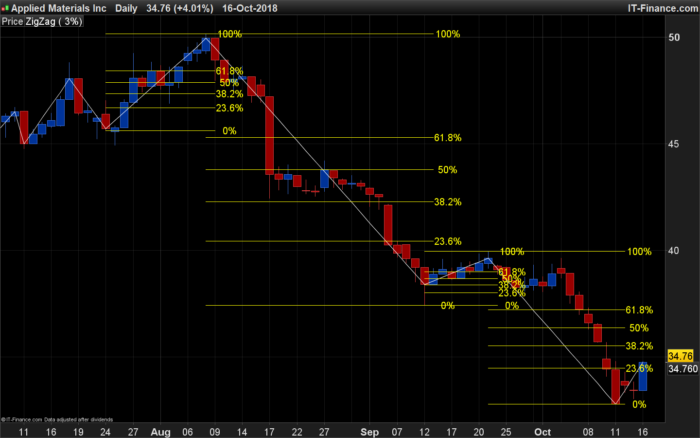Introduction
As an avid options trader, I’ve witnessed firsthand the immense power of the Fibonacci sequence in unlocking market patterns and enhancing trading strategies. These enigmatic numbers, discovered by the Italian mathematician Leonardo Fibonacci, have revolutionized the fields of art, architecture, and finance.
:max_bytes(150000):strip_icc()/dotdash_INV-final-Strategies-for-Trading-Fibonacci-Retracements-June-2021-01-508c06e0d08c4e28a71e7778e0eae9ee.jpg)
Image: quantstrategy.io
Traders worldwide have embraced the Fibonacci sequence as a valuable tool for identifying support and resistance levels, charting retracements, and predicting market turning points. Options traders, in particular, can harness the sequence’s ratios to formulate profitable strategies.
Using Fibonacci for Market Analysis
The Fibonacci sequence begins with 0 and 1, and each subsequent number is the sum of the two preceding numbers. The sequence continues indefinitely, with the numbers becoming increasingly large. The most common ratios used in options trading include:
- 0.236 (23.6%)
- 0.382 (38.2%)
- 0.500 (50.0%)
- 0.618 (61.8%)
- 0.786 (78.6%)
These ratios represent key levels at which traders can expect the market to pause or reverse its trend during retracements or pullbacks. The most significant level is 0.618, often referred to as the “Golden Ratio.
Fibonacci Retracements for Support and Resistance
Fibonacci retracements are used to identify potential support and resistance levels after a significant market move. The retracement levels are calculated as percentages of the move’s entire range, providing insights into areas where the market may bounce or regain momentum.
For example, after an upward price movement, retracement levels at 23.6%, 38.2%, 50.0%, and 61.8% can indicate potential areas for the market to find support and resume its upward trend.
Fibonacci Expansions for Bullish and Bearish Targets
Fibonacci expansions go beyond retracement analysis, allowing traders to project potential profit targets for bullish and bearish moves. By extending the Fibonacci sequence beyond the current price high or low, traders can identify potential areas where the trend may find resistance or support on its path.
Fibonacci expansion levels can be used to set stop-losses, take-profit orders, and determine risk-reward ratios, ensuring more precise trade management.

Image: www.iqoptionwiki.com
Recent Trends and Developments
The Fibonacci sequence continues to gain traction among options traders due to its versatility and applicability across diverse trading styles. Modern trading platforms offer integrated Fibonacci tools, simplifying their implementation for both novice and experienced traders alike.
Recent advances in artificial intelligence (AI) and machine learning have also enhanced Fibonacci-based trading strategies. AI algorithms can automate the analysis process, identifying Fibonacci patterns and potential trading opportunities with greater speed and accuracy.
Tips and Expert Advice
- Identify Strong Trends: Fibonacci tools work best in trending markets. Look for clear uptrends or downtrends before applying them.
- Combine with Other Indicators: Don’t rely solely on Fibonacci. Combine it with technical indicators like moving averages or chart patterns for more comprehensive analysis.
- Use Multiple Time Frames: Apply Fibonacci tools to different time frames to gain broader market insights and potential trade set-ups.
- Manage Risk: Set appropriate stop-loss levels and position sizes to minimize potential losses.
- Practice and Monitor: As with any trading strategy, practice and monitor your performance to refine your approach.
Remember, trading with Fibonacci tools requires discipline, patience, and a deep understanding of market dynamics. By following these tips and seeking guidance from experienced options traders, you can improve your accuracy and profitability.
FAQ
Q1: What is the Fibonacci sequence?
A: The Fibonacci sequence is a series of numbers in which each number is the sum of the two preceding numbers. It starts with 0 and 1, and continues infinitely.
Q2: How are Fibonacci retracements used in options trading?
A: Fibonacci retracements identify potential support and resistance levels after a significant market move. They are calculated as percentages of the move’s entire range.
Q3: What is the most significant Fibonacci ratio?
A: The most significant Fibonacci ratio is 0.618, often known as the “Golden Ratio.”
Q4: Can Fibonacci tools be automated?
A: Yes, modern trading platforms and AI algorithms can automate the Fibonacci analysis process.
Q5: Are Fibonacci methods suitable for all trading styles?
A: Fibonacci tools can be applied to both short-term and long-term trading strategies, enhancing market analysis for various trading approaches.
Conclusion
The Fibonacci sequence, with its inherent elegance and mathematical precision, has proven to be an invaluable asset for options traders worldwide. By incorporating Fibonacci tools into your trading arsenal, you can refine your market analysis, identify key support and resistance levels, and develop more precise trading strategies.
Fibonacci In Options Trading

Image: xfxtrading.blogspot.com
Call to Action
If you’re eager to delve deeper into the world of Fibonacci options trading, I encourage you to explore additional resources and engage with experienced traders. The Fibonacci sequence is a powerful tool that can elevate your trading journey, but it is only one piece of the puzzle. Embrace a comprehensive approach and always prioritize risk management for long-term success.






